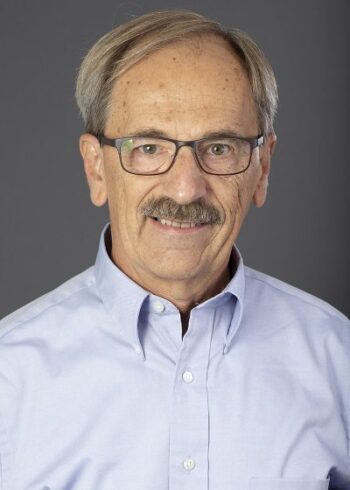From the Editor: What Should We Do With Spaces Along Highways?

Environment California recently performed a study about using space along highways for solar-panel fields. California has been a leader in solar-energy production, and this report states that three counties could provide enough energy to power 270,000 homes annually. Try to balance this with the current grassy or weedy areas that need continual maintenance or the occasional pond that serves a purpose but perhaps not as important as creating energy.
Since I was in the transportation design field for most of my career, I began thinking about other uses for “wasted” space along highways. Here are some suggestions besides solar-panel fields. Some of these already may be in use, and some may only be appropriate for certain sites.
• Bike paths and walking trails: Create dedicated paths for cyclists and pedestrians, promoting active transportation.
• Art installations: Install sculptures, murals or art installations to add cultural and aesthetic value to the area.
• Greenery and landscaping: Planting trees, shrubs and flowers can enhance the aesthetics and help reduce pollution by absorbing carbon dioxide.
• Rest areas: Construct rest areas with amenities such as restrooms, picnic areas and benches for travelers to take a break.
• Solar farms: Install solar panels alongside highways to generate clean energy and contribute to sustainability efforts.
The choice of how to use space along highways depends on the specific location, local needs and available resources. Collaborative planning involving local governments, communities and experts can lead to innovative and sustainable solutions.
The Real Subject
Let me stop here and make a confession. This column isn’t really about the use of space along highways.
The part of the column starting with “Bike paths … ” through the summary paragraph ending in “ … sustainable solutions,” was written by ChatGPT. I don’t know the rules for using ChatGPT information; should that be in quotes, or do I need to cite the reference? Regardless, that’s a small concern. The larger concern is the ability to recognize something that’s composed by software and not by an individual.
While I agree solar farms and greenery and art installations are ideas worthy of consideration in many locations, and worthy of writing a column about, the larger issue for me is when and how this writing tool is used. The list and paragraph above sound pretty much like my language. I didn’t make any edits, but with very few changes, I could easily make it “my voice.” I didn’t even have to make any spelling or grammar revisions.
When Is It OK?
Use of AI conversational services can be very helpful when utilized appropriately. It may help you format a resume or create a greeting-card verse or even propose an introductory paragraph for an article. My fear, however, is that it lessens the creative portion of writing or composing thoughts and putting them down on paper, so to speak.
I teach a college-level engineering course that requires a lot of report writing and script writing for technical presentations. As I used ChatGPT with test topics, I was somewhat surprised with the fairly accurate results. The best use, in my opinion, is to get an example of a resignation letter or a birthday-party announcement. There were other times when the structure of sentences and paragraphs was so good as to be considered beautifully written, and there were times when the product read as if it were written for a magazine.
I also teach a senior-level civil and environmental course that requires students to write reports of various types. Some are very technical, discussing design alternatives and methods of analyses. Others are geared toward the public, and the language was significantly different. Both are important skills for engineers to learn and use. I’m a bit concerned there will be too much reliance on AI-generated documents. I’m also concerned I won’t be able to recognize them.
I’m definitely in favor of finding effective uses for the space along highways, however, and that may be the “real” subject of a future column.
About Robert Schickel
Robert Schickel was born in New Jersey and received his BS in Civil Engineering degree in 1971 from Valparaiso University in Indiana. His career started as a bridge design engineer and expanded to include design of various transportation facilities, including highways, bridges, rail lines and stations, and airport runways. Mr. Schickel managed engineering offices ranging from 20 to 140 people. He also served as a consultant to a large utility company. Mr. Schickel currently resides in Indiana and serves as Adjunct Professor for the College of Engineering at Valparaiso University. He enjoys his retired life at his lake house, playing golf, listening to music and spending time with his family, especially his grandchildren.


